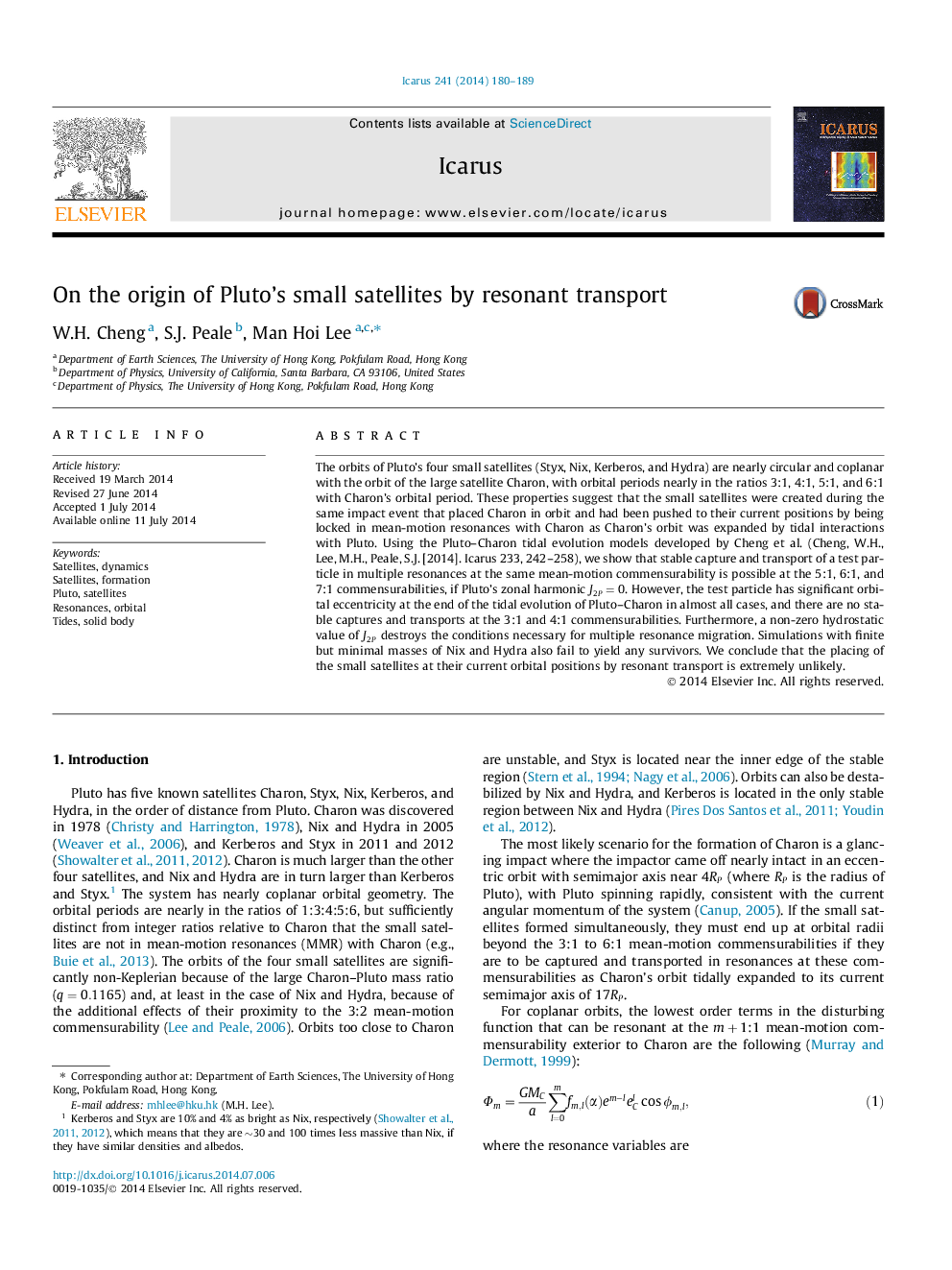| کد مقاله | کد نشریه | سال انتشار | مقاله انگلیسی | نسخه تمام متن |
|---|---|---|---|---|
| 8137772 | 1523549 | 2014 | 10 صفحه PDF | دانلود رایگان |
عنوان انگلیسی مقاله ISI
On the origin of Pluto's small satellites by resonant transport
ترجمه فارسی عنوان
در مبدا ماهواره های کوچک پلوتو با حمل و نقل رزونانس
دانلود مقاله + سفارش ترجمه
دانلود مقاله ISI انگلیسی
رایگان برای ایرانیان
کلمات کلیدی
ماهواره ها، دینامیک، ماهواره ها، شکل گیری، پلوتو، ماهواره، رزونانس، مدار جزر و مد، بدن جامد،
موضوعات مرتبط
مهندسی و علوم پایه
علوم زمین و سیارات
علوم فضا و نجوم
چکیده انگلیسی
The orbits of Pluto's four small satellites (Styx, Nix, Kerberos, and Hydra) are nearly circular and coplanar with the orbit of the large satellite Charon, with orbital periods nearly in the ratios 3:1, 4:1, 5:1, and 6:1 with Charon's orbital period. These properties suggest that the small satellites were created during the same impact event that placed Charon in orbit and had been pushed to their current positions by being locked in mean-motion resonances with Charon as Charon's orbit was expanded by tidal interactions with Pluto. Using the Pluto-Charon tidal evolution models developed by Cheng et al. (Cheng, W.H., Lee, M.H., Peale, S.J. [2014]. Icarus 233, 242-258), we show that stable capture and transport of a test particle in multiple resonances at the same mean-motion commensurability is possible at the 5:1, 6:1, and 7:1 commensurabilities, if Pluto's zonal harmonic J2P=0. However, the test particle has significant orbital eccentricity at the end of the tidal evolution of Pluto-Charon in almost all cases, and there are no stable captures and transports at the 3:1 and 4:1 commensurabilities. Furthermore, a non-zero hydrostatic value of J2P destroys the conditions necessary for multiple resonance migration. Simulations with finite but minimal masses of Nix and Hydra also fail to yield any survivors. We conclude that the placing of the small satellites at their current orbital positions by resonant transport is extremely unlikely.
ناشر
Database: Elsevier - ScienceDirect (ساینس دایرکت)
Journal: Icarus - Volume 241, October 2014, Pages 180-189
Journal: Icarus - Volume 241, October 2014, Pages 180-189
نویسندگان
W.H. Cheng, S.J. Peale, Man Hoi Lee,
